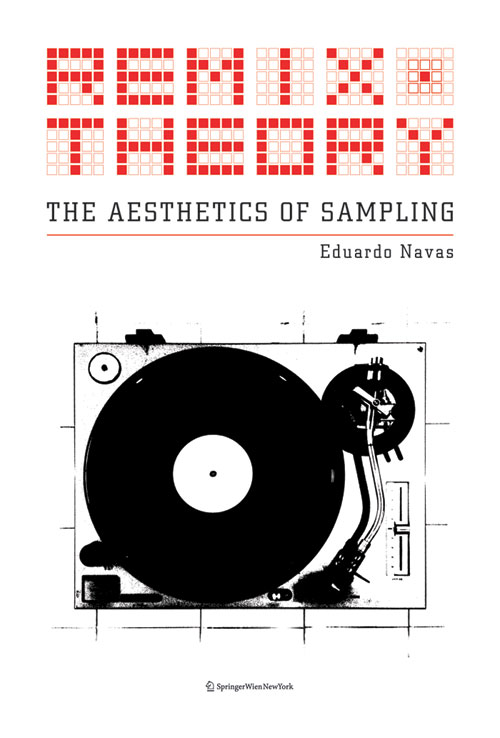Eduardo Navas: Remix Theory: The Aesthetics of Sampling (2012)
Filed under book | Tags: · 1970s, 1980s, mashup, music, music history, music theory, remix, sampling

“Remix Theory: The Aesthetics of Sampling is an analysis of Remix in art, music, and new media. Navas argues that Remix, as a form of discourse, affects culture in ways that go beyond the basic recombination of material. His investigation locates the roots of Remix in early forms of mechanical reproduction, in seven stages, beginning in the nineteenth century with the development of the photo camera and the phonograph, leading to contemporary remix culture. This book places particular emphasis on the rise of Remix in music during the 1970s and ‘80s in relation to art and media at the beginning of the twenty-first Century. Navas argues that Remix is a type of binder, a cultural glue—a virus—that informs and supports contemporary culture.”
Publisher Springer, Vienna, 2012
ISBN 3709112621, 9783709112625
230 pages
RemixTheory.net (from the author)
Publisher
Simon Reynolds: Retromania: Pop Culture’s Addiction to Its Own Past (2011)
Filed under book | Tags: · mashup, music, music criticism, music history, popular culture

We live in a pop age gone loco for retro and crazy for commemoration. Band reformations and reunion tours, revivals and reissues, remakes and mash-ups … Are we heading toward a sort of cultural-ecological catastrophe, where the archival resources of rock history have been exhausted? What happens when we run out of past?
Simon Reynolds, one of the finest music writers of his generation, argues that we have reached a tipping point. Earlier eras had their own obsessions with antiquity, but never before has there been a society so obsessed with the cultural artifacts of its own immediate past.
Retromania is the first book to examine the retro industry and ask the question: Is this retromania a death knell for any originality and distinctiveness of our own era?
Publisher Faber & Faber, 2011
ISBN 0865479941, 9780865479944
458 pages
PDF (PDF; updated on 2012-7-26)
PDF (MOBI; added on 2012-7-26)
EFF: Teaching Copyright (2009)
Filed under syllabus | Tags: · copyright, education, fair use, filesharing, free culture, intellectual property, internet, law, mashup, public domain, remix, technology

There’s a lot of misinformation out there about legal rights and responsibilities in the digital era.
This is especially disconcerting when it comes to information being shared with youth. Kids and teens are bombarded with messages from a myriad of sources that using new technology is high-risk behavior. Downloading music is compared to stealing a bicycle — even though many downloads are lawful. Making videos using short clips from other sources is treated as probably illegal — even though many such videos are also lawful.
This misinformation is harmful, because it discourages kids and teens from following their natural inclination to be innovative and inquisitive. The innovators, artists and voters of tomorrow need to know that copyright law restricts many activities but also permits many others. And they need to know the positive steps they can take to protect themselves in the digital sphere. In short, youth don’t need more intimidation — what they need is solid, accurate information.
EFF’s Teaching Copyright curriculum was created to help teachers present the laws surrounding digital rights in a balanced way.
Teaching Copyright provides lessons and ideas for opening your classroom up to discussion, letting your students express their ideas and concerns, and then guiding your students toward an understanding of the boundaries of copyright law.
Published by Electronic Frontier Foundation, May 2009
Creative Commons Attribution license 3.0 US
View online (HTML)
Comment (0)
